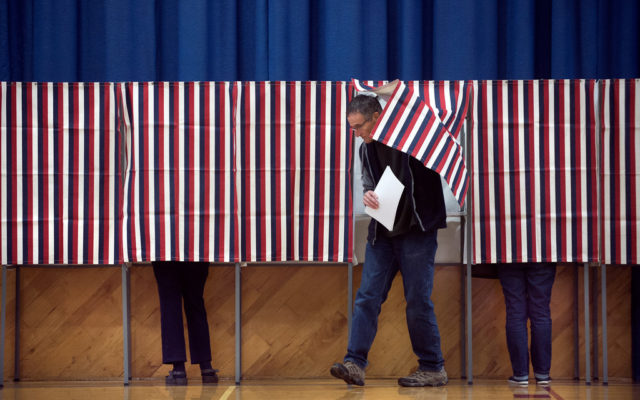
Maine passes ‘red flag’ law born out of the Lewiston shooting
By Billy Kobin, Bangor Daily News Staff
Mainers voted Tuesday to create a “red flag” gun control law that came in response to the 2023 mass shooting in Lewiston.
The yes side of Question 2 had 60.1% of votes to 39.9% for the no side when the Bangor Daily News and its national partner, Decision Desk HQ, called the race at 9:48 p.m. Tuesday.
The effort from the Maine Gun Safety Coalition and Democratic-aligned groups grew out of the Legislature and Gov. Janet Mills declining to pass such a law following the shooting at a Lewiston bowling alley and bar that left 18 dead and 13 injured in Maine’s deadliest rampage. Mills endorsed a no vote, and the Maine State Police campaigned against the measure.
It was a nuanced campaign in part because of Maine’s existing “yellow flag” law, which was negotiated by Mills and the gun-rights Sportsman’s Alliance of Maine. It lets police take a person whose loved ones fear is dangerous into protective custody before they receive a mental health evaluation and then go before a judge who can temporarily take away access to weapons.
The red flag law will skip two of those steps by letting family members go directly to a court to seek an order restricting a loved one’s access to weapons. Maine’s new law could face a challenge in court, but the U.S. Supreme Court upheld a similar law last year.
Both sides of the question counted family members of Lewiston shooting victims among their supporters. Anne Jordan, who was executive director of a state commission that investigated the mass shooting, and medical and education groups backed the red flag initiative. Police groups opposed the question, saying it could make their jobs more dangerous.
Arthur Barnard, whose son, Arthur Strout, was one of the Lewiston shooting victims, supported Question 2 and called the election result “bittersweet” in a Tuesday night statement.
“Nothing will bring back my son or the 17 others who lost their lives that night,” Barnard said. “But this common-sense measure will help prevent other parents from ever having to experience what we have.”
The case of Lewiston gunman Robert Card II, a 40-year-old Army reservist whose family and military peers had warned was exhibiting erratic and threatening behavior in the months before the mass shooting, loomed large over the debate about joining more than 20 other states with similar laws.
A commission that Mills formed to review the shooting found sheriff’s deputies had enough probable cause to use the yellow flag law on Card instead of only performing welfare checks at his Bowdoin residence in the months before the shooting. Survivors and family members of victims sued the military earlier this year for failing to heed other warning signs.
The Democratic-led Legislature made changes to the yellow flag law afterward that sharply increased its use. Mills and other Question 2 opponents noted police use of the yellow flag statute surged after the Lewiston shooting and that it has been used more than 1,000 times since it took effect.
It was a shoestring referendum campaign by Maine’s recent standards. The main political group on the yes side raised $900,000, with $100,000 of that coming from the national gun control organization Giffords. Two committees on the no side raised just $130,000, relying late on digital ads that made general arguments against gun control.
The yes side’s message cut through in many of Maine’s cities. At the Cross Insurance Center in Bangor, 39-year-old pediatrician Daria Thompson couched it as a way to cut down on violence.
“I have long thought that we should be doing more to control gun violence in this country, and if a simple temporary order to remove guns from someone who has mental health issues or anything else is the start, then great, I think we should be doing it,” she said.
BDN writers Michael Shepherd and Annie Rupertus contributed to this report.